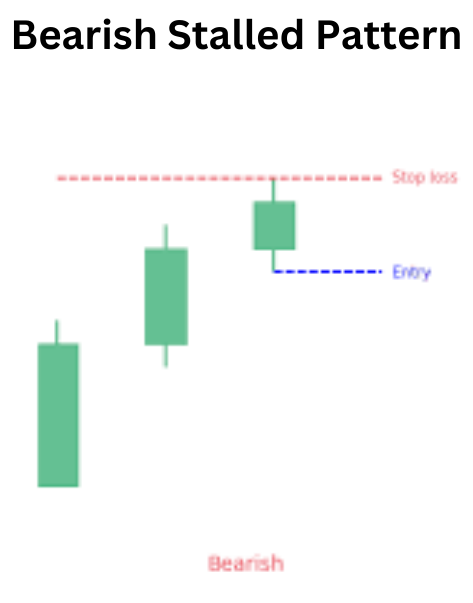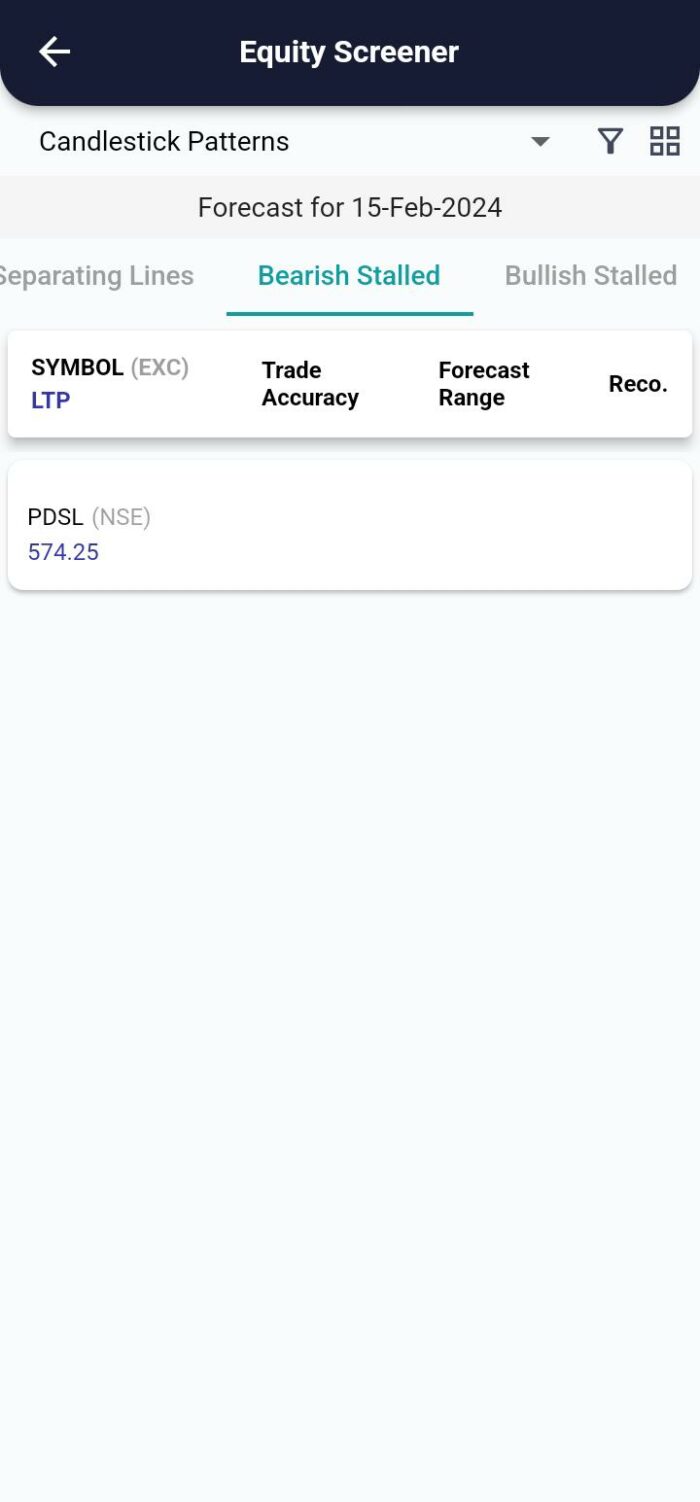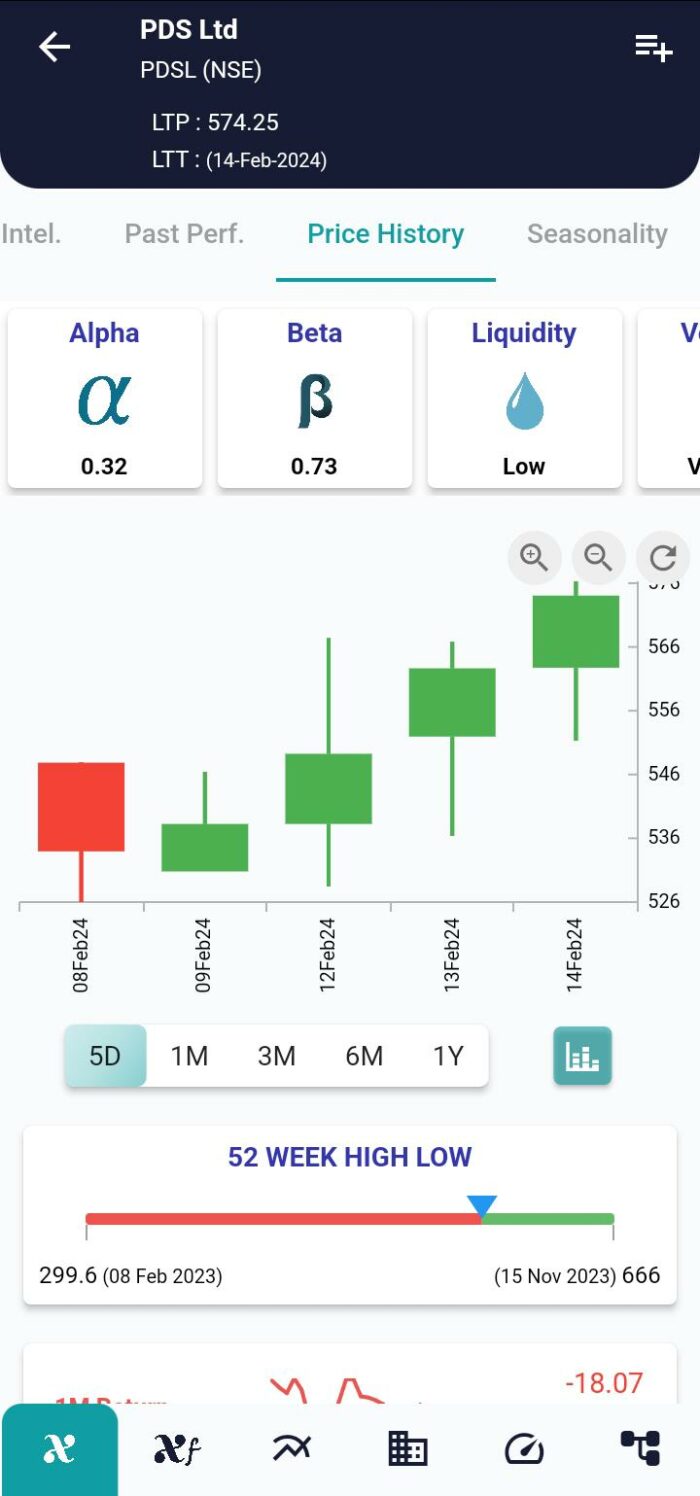Candlestick Pattern
Posted On: February 15, 2024
Bearish Stalled Pattern: Decoding Potential Market Reversals
In the intricate landscape of financial markets, traders deploy a variety of technical analysis tools to decipher potential trend reversals and market dynamics. Candlestick patterns, known for their ability to provide actionable insights, play a crucial role in this endeavor. The Bearish Stalled Pattern is one such candlestick formation that captures the attention of traders, signaling potential bearish reversals. In this blog post, we will explore the concept of the Bearish Stalled Pattern, delve into its identification process, and discuss how traders can interpret this formation to refine their trading strategies.
The Bearish Stalled Pattern is a three-candlestick formation that typically materializes during an uptrend, suggesting potential exhaustion of bullish momentum. The pattern consists of two large bullish candles followed by a third smaller candle that closes within the range of the previous two, indicating a potential loss of upward momentum.

Identifying the Bearish Stalled Pattern:
To identify the Bearish Stalled Pattern, traders should pay close attention to the following key features:
- Uptrend: The pattern occurs within an ongoing uptrend, indicating potential bearish reversal.
- Two Large Bullish Candles: The first two candlesticks are large bullish candles, reflecting the prevailing buying pressure in the market.
- Third Smaller Candle within Range: The third candlestick is smaller and closes within the range of the previous two, suggesting a potential stall in upward momentum.

Interpreting the Bearish Stalled Pattern:
The Bearish Stalled Pattern implies a potential shift in market sentiment from bullish to bearish. The appearance of the smaller candle within the range of the previous two signals a potential stall in the uptrend, indicating that buyers may be losing control. Traders interpret this pattern as a signal to exercise caution and consider initiating short positions or adjusting stop-loss levels on existing long positions.

Confirmation and Trade Execution:
While the Bearish Stalled Pattern provides a potential reversal signal, traders often seek supplementary confirmation before entering trades. They may consider the following factors:
- Volume Confirmation: Higher trading volume during the pattern’s formation enhances the credibility of the potential reversal.
- Support and Resistance Levels: Identifying key support and resistance levels can further validate the pattern’s authenticity and guide in setting realistic price targets.
- Trend Analysis: Integrating the Bearish Stalled Pattern with broader trend analysis helps traders understand the context within which the pattern is occurring.
Conclusion:
The Bearish Stalled Pattern serves as a valuable tool for traders, offering insights into potential bearish reversals during an uptrend. By understanding its identification process and adeptly interpreting this formation, traders can refine their trading strategies.
However, it’s crucial to recognize that no pattern guarantees success, and informed trading decisions necessitate additional verification and comprehensive analysis. As with any trading strategy, risk management and prudent decision-making remain paramount for traders navigating the complexities of financial markets.
Where can I see further insights on this stock?
xCalData offers unbiased insights into stocks. Download the app from google play. For Actionable Intelligence, subscribe to xCalData app on Android devices: Download here
For Actionable Intelligence, subscribe to xCalData app on Android devices: https://tinyurl.com/downloadxCalData

Disclaimer: The securities quoted are for illustration only and are not recommendatory.
Popular Posts
-
Stock of Interest . August 23, 2024
#HSCL (NSE) Stock Report | 23 Aug 2024
-
Stock of Interest . August 23, 2024
Add Zerodha trading account to xCalData
-
Stock of Interest . August 23, 2024
What is xCalData , how to use it and how accurate is it?
-
Stock of Interest . August 23, 2024
Jurik Moving Average (JMA): A Profit Trading Insight